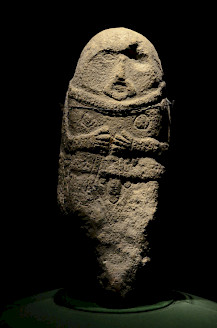Scythian Dacia
Q212853Dacia: country north of the Lower Danube, more or less identical to modern Romania. It experienced influences from the Thracians, Scythians (below), Greeks, and Celts and became a powerful kingdom, added as a province to the Roman Empire, abandoned to Germanic-speaking tribes, and part of the Avar zone of influence.
Scythian Dacia

Like the Thracians, Celts, and Greeks, the Scythians were descendants of Indo-European-speaking steppe nomads from Central Eurasia, but unlike them, they belonged to an eastern group. They spoke an Indo-Iranian language. In the eighth century BCE, they started on their journey to the west, where they took over the areas that had once been inhabited by the Cimmerians. Another group, which followed the Scythians, was called the Sauromatians.
The explanation of this westward movement, which would continue for centuries (Huns, Avars, Turks, Magyars, Mongols ...) is that the western part of the Eurasian steppe is more humid than the eastern part, so that nomads prefer to go west rather than vice versa. The Scythian migration was only one such movement.
The Scythians arrived in Dacia in the sixth century BCE and settled among the Getae, while others moved on, across Romania, to the plains of Hungary. Although there must have been fights, there was a parallel process of seasonal migration that was more peaceful. Seated on their horses and in their waggons, the Scythians drove their cattle back and forth over the steppe. Still, they had some permanent residences, such as the places where their kings were buried. Some huge settlements are also known. There lived the blacksmiths, who made beautiful works of art, full of mythological and animal motifs, which they shared with the Getae. The griffin is an example.
The Greek researcher Herodotus had one of his lesser days when he used the fourth book of his Histories to describe Darius' campaign against the Scythians, who were living north of the Danube, but it seems certain that the Persian king bridged the river in c.513 BCE. An inscription from Gherla in Romania, if it is not a hoax, confirms the Persian activities in Dacia.
Near the modern town of Lumina, just south of the Danube, a group of Scythians built a burial mound for a deceased leader, where the statue was erected that can be seen above. It represents a warrior armed with an ax, a short sword and a dagger. This statue was made in the last quarter of the sixth century and it is an intriguing thought that this warrior and the sculptor must have seen Darius's army.
 Scortaru, Scythian cauldron |
 Medgidia, Fake Scythian sword (akinakes) |
 Mihai Eminescu, Fish-shaped horsegear |
 Corbu, Seal ring of king Scyles |